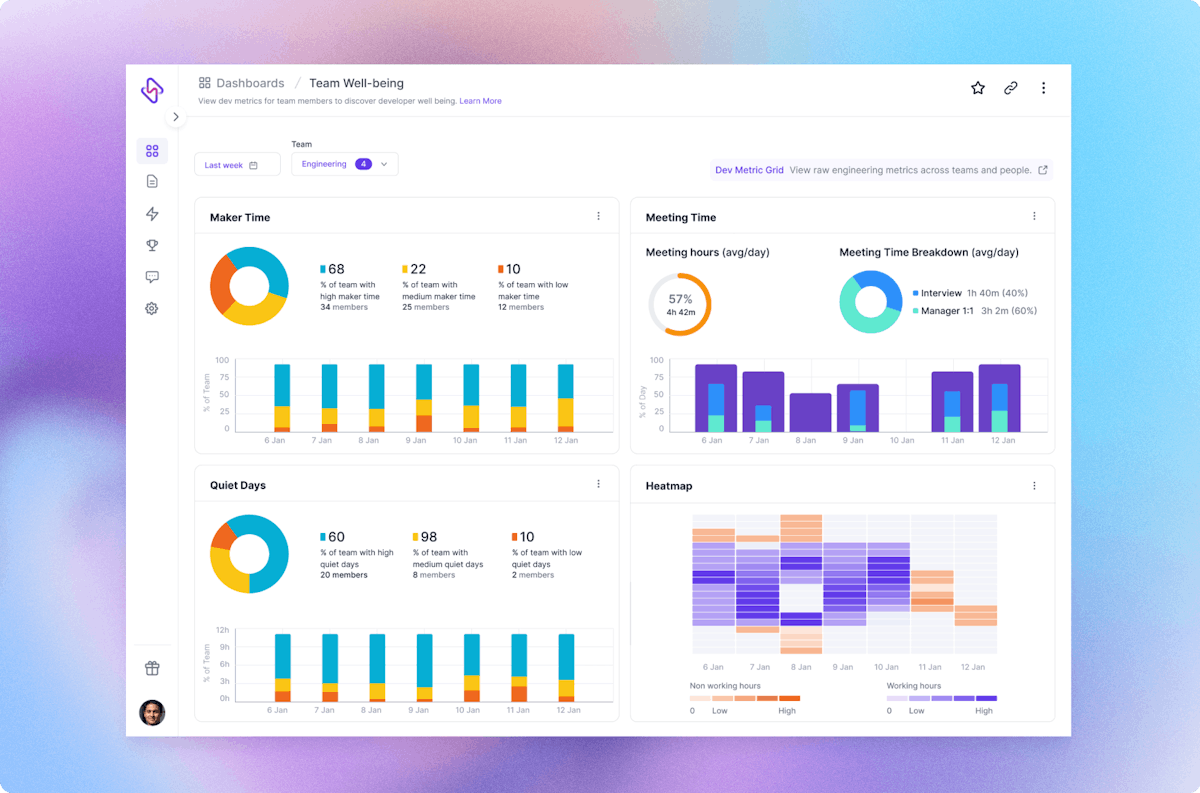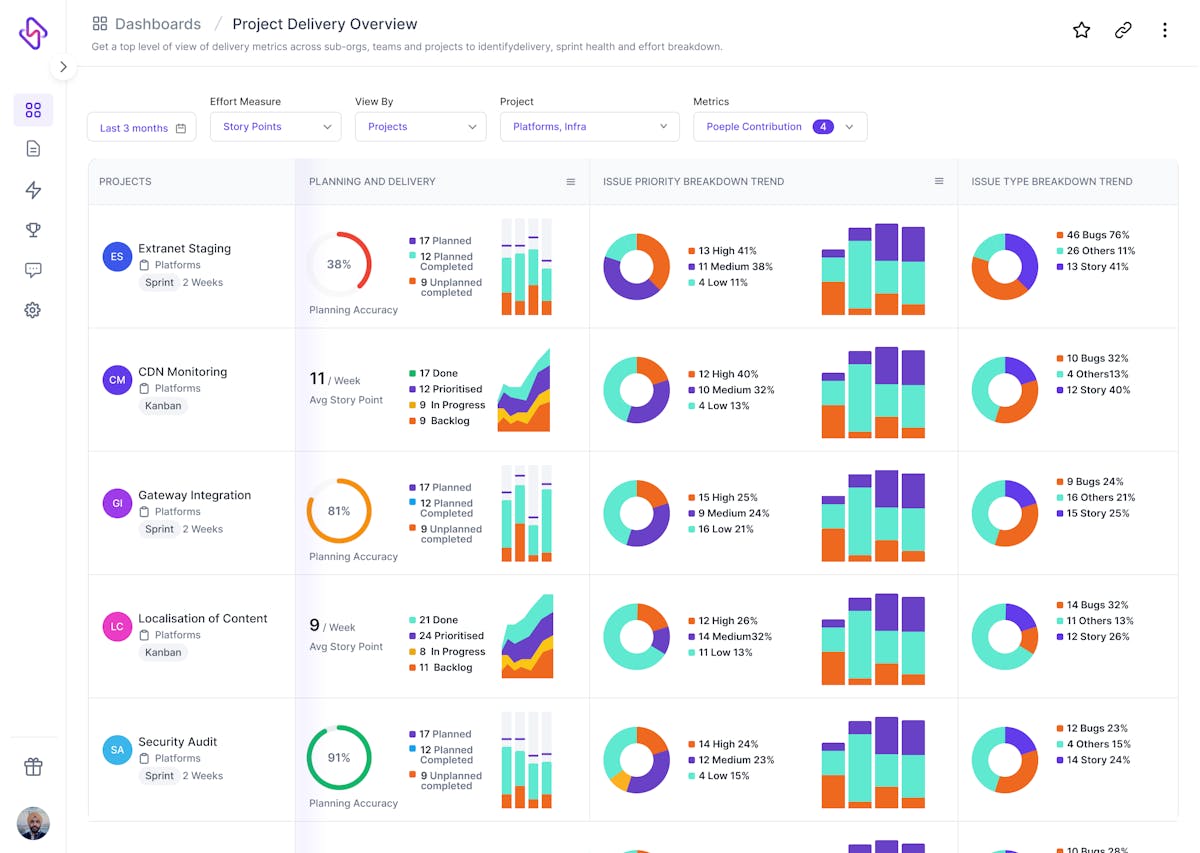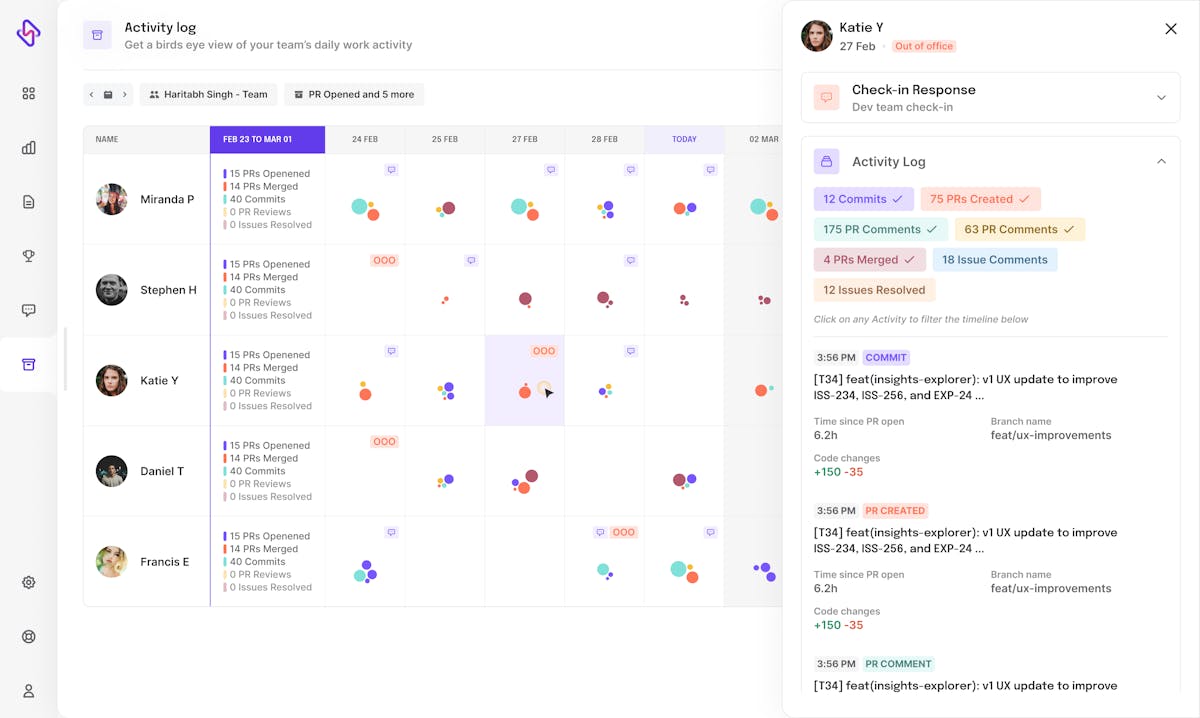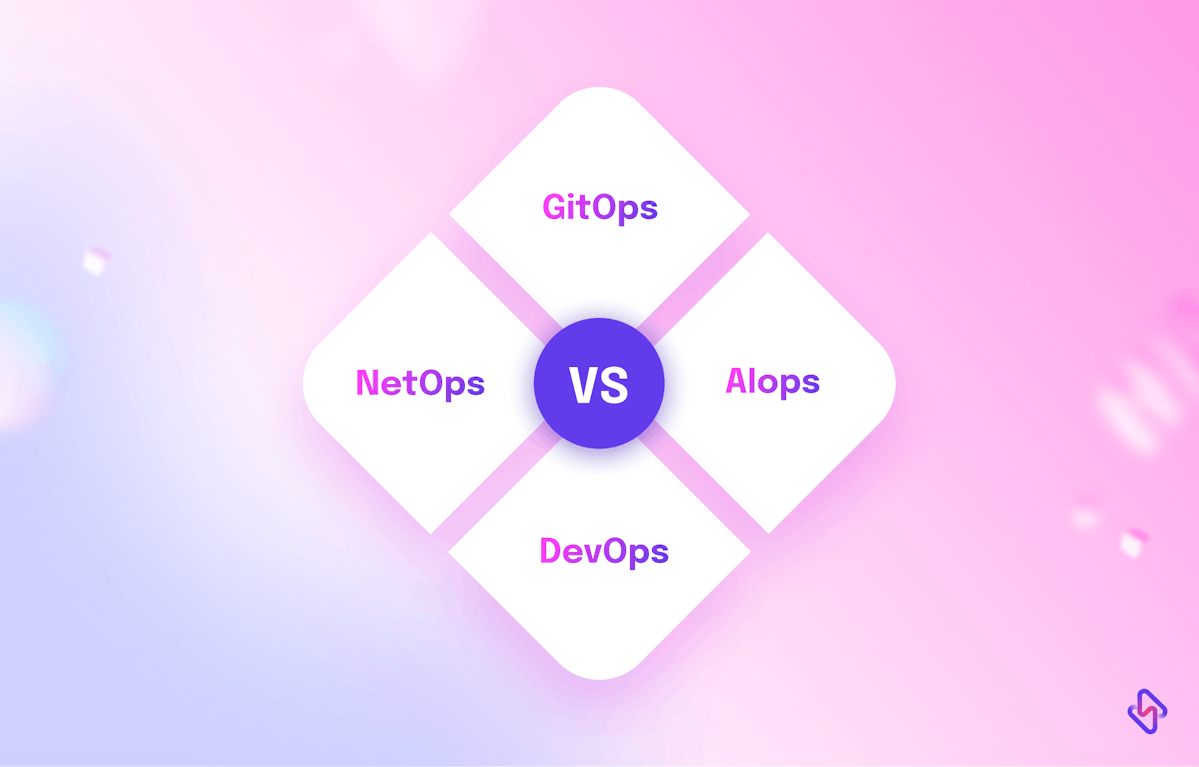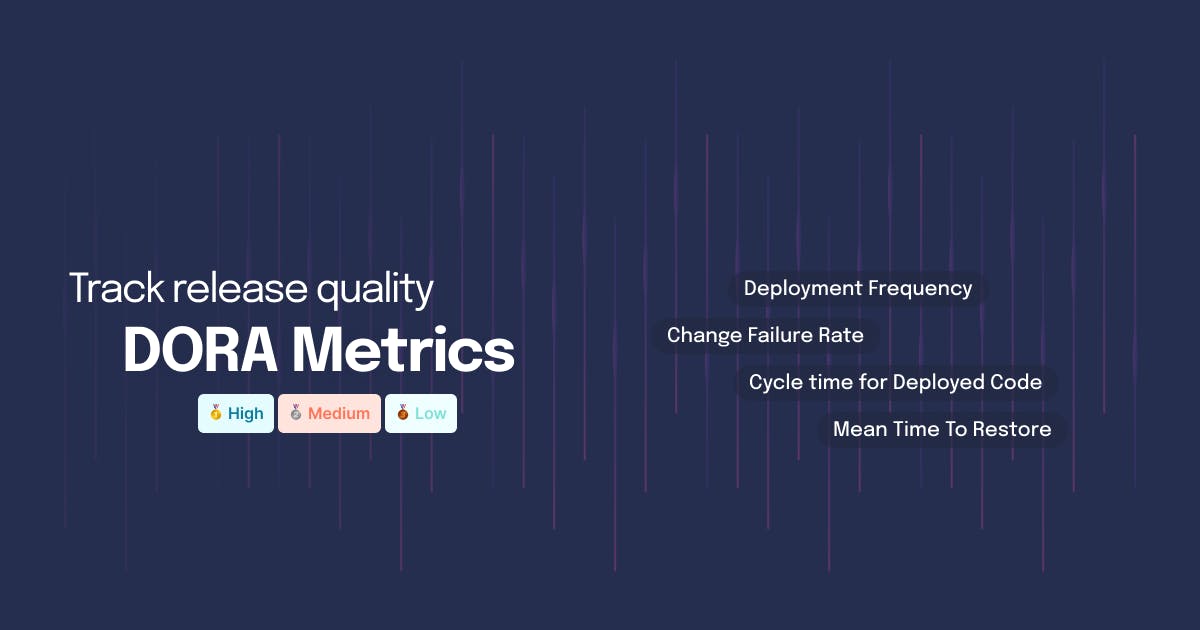Using an engineering management platform comes with end-to-end visibility into a developer’s workload, processes, and bottlenecks without putting any extra effort from devs or EMs.
Another way to drive collaboration through EMPs is via data-driven 1:1s. Without appropriate analytics in place, managers end up spending hours sifting through all developmental work to gauge process success, people health, and final deliverables. The constant juggle makes 1:1s seem like a burden more than a call to discuss blockers.
However, when 1:1s are data-driven and have sufficient context around collaboration metrics, productivity signals, and employee experience– the overall conversation turns more structured, action-oriented, and relevant. Data also offers enough groove and agenda around update meetings that ‘actually’ caters to a developer’s needs rather than becoming just another periodic standup.
An EMP not only helps engineering managers to have data-driven 1:1s but navigate bottlenecks, and appreciate each other for work done, and efforts put in. Now EMs have better ideas about: Which devs are at the top of their game, or why some PRs are resolved faster than others. When managers and developers work together to overcome workflow issues, teams unlock meta productivity, and supercharged collaboration. Teams are expected to become 16% more productive when they engage with each other through the power of data and analytics.
Moreover, code reviews too can become efficient with the use of engineering analytics. Managers can use dev workmap to distribute reviews evenly within ICs. EMs can also track which engineer has more PR comments, or the average approved PR changes– all signs of increased collaboration.
EMPs take care of a developer’s journey– right from the planning stage to shipping code to prod, and accommodating customer changes. In today’s chaotic software development, an engineer only codes 33% of the time, with more than 20% of time swallowed by bureaucratic and administrative work. The less effective coding hours doesn’t do justice with the rising demand for good software.
With right engineering analytics, devs have seen an uptick of 10% in their effective coding hours. How? The answer is simple– by bringing method to their chaos through streamlined meetings, data driven 1:1s, working towards SDLC health, and effective code reviews.
This data also helps cross-functional teams to reduce dependencies, and reduce their backlogs without sitting blocked for hours, as in the past. This way, EMPs synergize all the business units including development, DevOps, testing and product management at one place, with holistic tracking of end-to-end product development. We are positive when we say that 2023 would transform the role of stakeholders, from being arm-chairist to getting actively involved in decision making.
8. Streamlined Work Allocation
Ask any engineering manager about their greatest challenges and they’ll be sure to include- workload distribution. As of now, only 29% of engineering leaders were confident of their workload distribution. The others have poor visibility into how and what their devs are working on, or managing their current projects.
As uneven engineering demands rise, so does the uneven work allocation. In turn, most devs become overloaded with code reviews, or incident load, while others have a fair share of coding and grooming time into their workday. Sometimes, the work allotment is done without accounting for geographical barriers, past trends of progress, and existing work share.
With contextual data, engineering managers can figure out achievable ways to allocate work with all devs on the same page. When EMs have full visibility into each dev’s workflow, their strengths, weaknesses, and current day to day work progress trends, they will be effective at dividing tasks without any name-calling, or team friction– even enhancing their collaboration.
Managers, with all data in one place, can see each workload per developer, and how to optimize work hours for a healthy mix of all activities: code, incident management, hiring tasks, and PR reviews.
The greater outcome? Happy, and productive developers.
9. Unlock Developer Productivity
Here comes the blackbox of the engineering world– how to increase developer productivity, and where to start? By now, it’s pretty clear that data is not just the new oil but the key to resolve any hindrance that bogs down developers.
Developer productivity is essentially a product of small incremental steps taken at each step of the development workflow– right from writing legible code, to establishing a strong review process, optimizing processes with help of success metrics, and taking care of developer well-being. We already talked about how EMPs take care of this part of the problem.
Let’s talk about the more covert issues plaguing developer lives.
Status update meetings do not bore sufficient results when EMs lack clarity on their developer’s work schedules. They are more or less futile without data, and using an EMP has the potential to transform boring, and unproductive meetings into on-point, and strategic discussions.
Establishing sufficient maker time for each dev in an EMP can help devs minimize distractions, and reduce cognitive clutter, and context switching. Moreover, building feedback loops through data can help devs in understanding work expectations better, while motivating them to play on their strengths.
In an ideal but aspiring world, devs should also have enough time for grooming, growth, innovation, and training themselves and their mentees. Streamlined work allocation takes care of this problem by ensuring sufficient time in hand of devs for their own growth, and development– all in all increasing team productivity.
Last year made huge strides in the typical outlook of CTOs, and directors of engineering in using engineering management platforms. They went from “I might use this platform because my EM recommends” to “I need this tool for end-to-end visibility into the workflows,” even personally investing themselves into their developer success. It’s safe to say that Engineering Management Platforms have become a strategic topic for most C-suite execs.
But what makes an engineering management platform so critical to engineering success today, you may ask?
An engineering management platform enables data-driven transformation of engineering teams through bringing operational efficiency, optimized resource allocation, accelerated time to market, and breakdown of developmental silos. In the last two years, 77% of high-performing teams have used management platforms to track engineering progress and fulfil development milestones. The number speaks for itself and shows the trust engineering leaders put in data analytics.
The last few years surely paved the way for leaders to start using engineering management platforms. However, they haven’t yet tapped the full potential of work analytics, and management– thus a call for EMPs to reach their full potential.
This is the year of engineering transformation. With the rise in AI, IIoT 5.0, and data analytics, organizations have a cannot-miss opportunity to build optimized SDLCs and ramp up productivity ambitions with limited headcount.
In these big shifts, data is the key to break down work silos and keep energies focused on maintaining SDLC, and in turn, building better products. An engineering management platform removes the scourge of poor work visibility that weighs down not just engineers, but the entire team. High work visibility not only ensures collaborative relationships, but also frees up engineer capacity so they can do what they genuinely love.
A company of top engineers translates into an organization that supports a work environment where devs have the autonomy to work, and freedom to innovate. All this can be realized with the help of engineering analytics.
For C-suite executives too, EMPs have the potential to bring speed, security, and resiliency in engineering systems. In the long-term, using an EMP helps engineering leaders to iterate faster, and iterate better while bringing down costs of software development, and maintenance. The businesses going to survive the cold waters of disruptive technologies are not the ones with best assets or higher headcount, but that can strategically use data to pull more wins, and create opportunities out of adversities.
The future of work is secure, and rising engineering demand is a testimonial to it. With an added advantage of generative AI, GitOps 2.0, and AIOps, engineering management platforms will radically overhaul the way SDLC works today. The next phase of EMPs could act as a harbinger of this paradigm shift and can unleash the true potential of a diverse yet synergised engineering ecosystem.
Trust us on this one, engineering management platforms are going to be the most phenomenal investment ever made in pursuit of driving engineering success!




